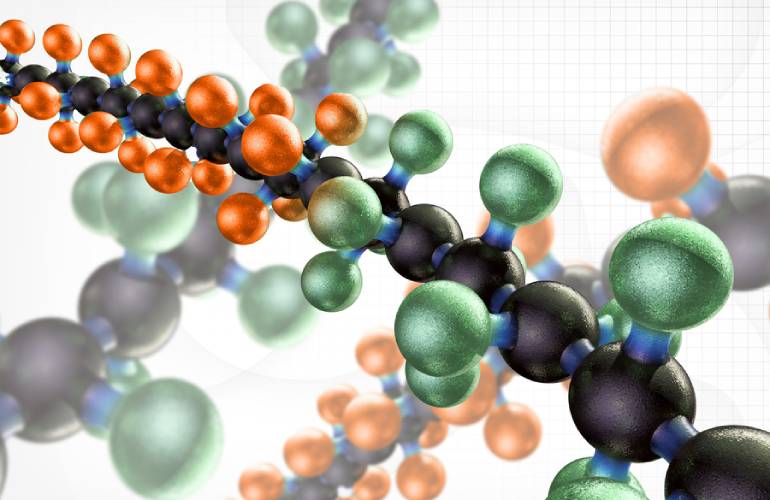
MIT researchers developed a fully autonomous experimental platform that can efficiently identify optimal polymer blends for applications like protein stabilization, battery electrolytes, or drug-delivery materials.
[Image courtesy of Christine Daniloff/MIT]
Researchers at MIT say they developed a fully autonomous experimental platform that can efficiently identify optimal polymer blends for new materials.
The closed-loop workflow uses an algorithm to explore a range of potential blends, according to an article on the MIT website. It feeds a selection of combinations to a robotic system that mixes chemicals and tests each blend. Based on the results, the algorithm decides which experiments to conduct next. It continues this process until the new polymer meets the user’s goals.
Experiments saw the system autonomously identify hundreds of blends that outperformed their constituent polymers.The researchers note that the best-performing blends didn’t necessarily use the “best individual components.”
Connor Coley is the senior author of a paper on the new approach. Coley, an assistant professor in the MIT Department of Chemical Engineering and MIT Department of Electrical Engineering and Computer Science, said the findings confirmed the value of using an optimization algorithm “that considers the full design space at the same time.”
“If you consider the full formulation space, you can potentially find new or better properties. Using a different approach, you could easily overlook the underperforming components that happen to be the important parts of the best blend.”
The researchers include lead author Guangqi Wu, a former MIT postdoc who is now a Marie Skłodowska-Curie postdoctoral fellow at Oxford University; Tianyi Jin, an MIT graduate student; and Alfredo Alexander-Katz, a professor in the MIT Department of Materials Science and Engineering. They believe their workflow innovation could facilitate the discovery of polymer blend materials that lead to advancements like improved battery electrolytes, more cost-effective solar panels, or tailored nanoparticles for safer drug delivery.
About the algorithm delivering polymer materials
After scientists narrow down their polymers for a blend, they still need to choose the composition of each polymer and the concentration of polymers in the blend. This requires algorithmic solutions, Coley said, because of the heavy lifting that goes into testing all the combinations.
The MIT researchers sought new random heteropolymer blends made mixing two or more polymers with different structural features. These polymers showed particularly promising relevance to high-temperature enzymatic catalysis, which increases the rate of chemical reactions. To start, they created an algorithm for the closed-loop workflow that autonomously identifies promising polymer blends based on the user’s desired properties.
Using a machine learning model, the researchers attempted to predict new blends’ performance. However, they said it proved difficult because of the large space of possibilities. So, they utilized a genetic algorithm using biologically inspired operations like selection and mutation. Their system encodes the composition of a polymer blend into a “digital chromosome.”
The algorithm sends 96 blends at a time to the autonomous robotic platform, which mixes the chemicals then measures their properties. Results come back to the algorithm, which generates a new set of polymers until the system finds an optimal blend.
Applying the platform to construct the polymers
The researchers say building the robotic system involved several challenges, including creating a technique to evenly heat polymers and optimize the speed at which the pipette tip moves up and down.
“In autonomous discovery platforms, we emphasize algorithmic innovations, but there are many detailed and subtle aspects of the procedure you have to validate before you can trust the information coming out of it,” Coley said.
The autonomous platform developed by the MIT team can generate and test 700 polymer blends per day, they say. It only requires human intervention for refilling and replacing chemicals.
While the researchers focused on polymers for protein stabilization, they say they could modify the platform for other uses. Those could include the development of new plastics or battery electrolytes. They also hope to use experimental data to improve the efficiency of their algorithm and develop new ones to streamline the operations of the autonomous liquid handler.
“Technologically, there are urgent needs to enhance thermal stability of proteins and enzymes,” said Ting Xu, a professor at the University of California at Berkeley, who was not involved with this work. “The results demonstrated here are quite impressive. Being a platform technology and given the rapid advancement in machine learning and AI for material science, one can envision the possibility for this team to further enhance random heteropolymer performances or to optimize design based on end needs and usages.”

